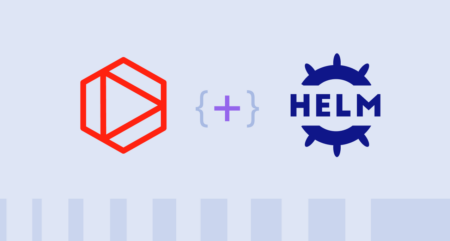Table of contents

Kubernetes is an open source platform designed to automate deploying, scaling, and operating application containers. It’s the de facto standard for container orchestration. According to the 2023 CNCF Annual Survey, 84% of organizations were using or evaluating Kubernetes. We’ve reached a point where you’re very likely to encounter this platform during your career. At Tabnine, our product engineers manage the Kubernetes applications using Helm Charts.
Helm is the package manager for Kubernetes, similar to npm for Node.js, pip for Python, or crate for Rust. It uses Helm Charts to define, install, and upgrade Kubernetes applications. A Helm Chart is a collection of files that package all the resources needed to deploy an application to a Kubernetes cluster. Charts are easy to create, version, share, and publish.
However, using Helm requires you to work with YAML, a file format that developers either love or love to hate. You also have to learn the Chart template syntax, which adds an additional layer of complexity for non-DevOps engineers. And on top of that, you need some understanding of Kubernetes. Luckily, Tabnine can help.
The days of searching for an answer on Google or Stack Overflow are over. Your subscription to Tabnine Pro comes with the ability to use models such as GPT-4o or Claude 3.5 Sonnet to return personalized solutions, leveraging your context using the latest model to provide the most accurate and efficient solutions.
Here are some ways Tabnine’s AI code assistant can help you while working with Helm Charts.
Use Tabnine chat to ask questions about the existing configuration. Ask it to explain the effect changing a certain setting will have. You can even have it create an ASCII flow diagram representing the life cycle of a pod based on the provided configuration. Get the answers you need via natural language conversation.
Get insights into existing and potential issues. Check if any configurations are set incorrectly and get solutions.
Use the know-how of the LLM to give you known solutions for common problems in a standard way.
Add documentation along with inline comments to charts making them easier to understand and maintain.
Convert your chart to a generic template that can be reused across different projects or requirements. Tabnine can help you replace hard-coded values with parameters to simplify customization and scaleability.
This AI-enhanced approach not only streamlines the workflow but also bridges the gap between operations and engineering teams by making Helm Chart management more accessible and less error prone. Querying and manipulating Helm Charts with the assistant is easy and saves time by reducing the need to remember specific syntax and best practices or searching for solutions online.
Are you using Helm Charts today without an AI code assistant? Sign up for a 90-day free trial of Tabnine Pro and let us know how it’s helped you.